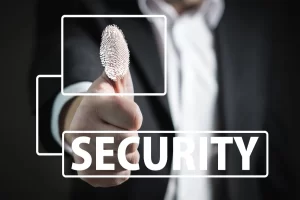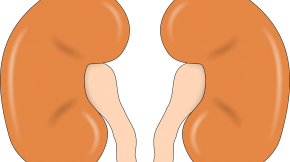How Long Do Fingerprints Last? Can They Wear Out?
Share
Fingerprints are unique, and their patterns vary immensely from one person to another. No two prints are the same, even for identical twins.
Fingerprints are located on the epidermal layer of the human fingers. They are ridges that leave impressions on the surfaces that we touch.
As a result of being unique, fingerprints are considered biometric identifiers. Forensic analysts use them to identify victims, smart scanners to unlock doors, and sensors to unlock mobile devices. Your fingerprints remain the same throughout the entirety of your life.
You would be surprised to know that fingerprints aren’t just unique to the human species. Some primates like chimpanzees and gorillas have these prints. Other species of sea mammals also have these groves.
So, how long do fingerprints last?
Fingerprints last throughout the entirety of our lives. The ridges and grooves become less pronounced as we grow older, but the patterns remain unchanged. There are exceptional circumstances where the patterns might disappear. We shall discuss them in the article.
What Causes The Wearing Down Of Fingerprints?
Fingerprints can undergo deterioration under particular circumstances. It occurs when the groves and ridges become less pronounced, and the texture becomes undetectable.
There are several ways in which the prints can wear down. Some of the ways are:
1. Exposure to certain chemicals
Some chemicals are known to cause the wearing of fingerprint ridges. Prolonged exposure to such chemicals causes rapid deterioration, and as a result, the prints become less pronounced.
A chemical commonly associated with such wear and tear is calcium oxide. The chemical is typically used to make bleaching powder, glass, and cement. On exposure, the chemicals will cause the groves to disappear due to corrosion virtually.
2. Long-term treatment using certain drugs
It is relatively uncommon for fingerprints to disappear due to drug use. The treatment of cancer has been associated with causing fingerprints to become less pronounced and even disappear altogether.
The phenomenon where exposure to chemotherapy agents causes a severe decline fingerprint is medically referred to as Hand-Foot Syndrome.
3. Physical wear
The physical wearing of print ridges can cause fingerprints to become nearly unrecognizable. It is not uncommon for people who do tasks that involve using fingers for prolonged periods to lose their prints.
Occupations such as typing, piano playing, and bricklaying have been linked to fingerprint degradation. The best way to solve the condition is by using gloves to protect the ridges on the dermal layer.
Types Of Fingerprint Patterns
If you look at your fingerprints, you will notice that they have a particular pattern or symmetry. We know that fingerprints are unique to each individual. However, all points lie within a specific pattern.
These pattern categories are inherited. That is, siblings are more likely to bear the same general patterns.
All fingerprint patterns lie in three categories, that is:
- The whorl
- The arch
- The loop
The whorl
These patterns form concentric circles from the center of the finger to the periphery.
The Arch
Arch fingerprints are the rarest type. They appear as ridges that start on one side and gently elevate in a hill shape, and exit in a gentle slope.
The loop
Loops appear as patterns that enter and exit on the same side of the finger. These happen to be the most common print.
Minutiae Print Features
These are the very fine details that generally enable us to classify fingerprints as either whorl, arch, or loop. They define the print characteristics.
They are:
Lake enclosure: A ridge starts as a single line before branching out and reuniting as a continuous line.
- Dot: A ridge appears in the middle of other ridges and does not connect with others.
- Spur: A short ridge branches off a long one and does not connect to other ridges.
- Independent ridge: It is a tiny ridge that appears between two prominent ridges and connects to neither of them.
- Core: Usually the star print, where a concentric loop might form.
- Delta: A confluence of two ridges resulting in a Y-like structure.
- Ridge ending: Points where ridges come to an end
- Cross over: A tiny ridge that connects two ridges running in parallel.
Bifurcation: It is a ridge that splits into two separate ridges.
Uses Of Fingerprints
Fingerprints have several uses. They are more than just unique patterns on our fingers. The use of fingerprints dates back to 200 BC. The use of prints is, therefore, not anything new. Let us take a look at some of how they are used:
1. Signing documents
The signing of documents by fingerprints dates back to the BC era. Fingerprints were used by Romans to validate documents in Babylon. It continued to 851 when the Chinese used fingerprints to validate loans between merchants.
Various legal documents can be signed using either a standard signature or fingerprints. It includes legally binding contracts, title deeds, licenses, etc.
2. Unlocking smart devices
Fingerprints are used to unlock many smart devices today. The addition of biometric verification systems has made our devices more secure. Your information is secure now more than ever.
Fingerprint verification works by scanning the ridges and grooves of your fingerprint and saving a digital copy into the phone’s local storage. Many phones allow you to register multiple prints, authorizing multiple users.
3. Opening doors that use a biometric lock feature
Biometric scanners are rapidly replacing magnetic card readers. The scanners are more secure and accurate. Unlike magnetic cards, fingerprints cannot be stolen. They are much harder to forge and duplicate.
Biometric scanners work by taking a digital image of the ridges and grooves on your fingers. It allows you to access secure rooms by authenticating prints, triggering the lock mechanism.
With biometric scanners, you can see if a potential burglar made an unauthorized attempted entry. The mechanism saves the prints to the database, which can be deleted later.
4. Forensic analysis
Fingerprints are used in criminal investigations to identify suspects. Prints gathered from crime scenes can be run against a database of known felons and used to provide evidence. The use of fingerprints in investigations dates back to the 1930s.
Even the seemingly obscure fingerprints can be identified using a simple blue light detector. Prints are very reliable in placing suspects at the crime scene.
5. Payment authentication
Specific parameters are currently being used to minimize cases of credit card fraud. These primarily include fingerprint authentication at ATMs and banks.
The system was implemented in various countries experiencing high fraud cases, and it has had notable success in these regions.
Types Of Impressions Made By Fingerprints
Fingerprint impressions are the ridges and grooves left behind after touching a surface. Fingerprints leave different impressions, some of which are barely visible to the naked eye.
These impressions help identify suspects when forensic evidence is being collected. Let us take a look at the three types of impressions:
1. Plastic prints
These are the most evident prints in terms of texture. They leave a 3D impression on the surface. It makes it easy for forensic scientists to identify the prints.
A plastic print is typically left on a soft surface like wax, a powder, or even fresh paint. The indentations are formed by the ridges on the surface of the hand.
2. Latent prints
Latent prints are by far the most challenging type of prints to identify. They are virtually invisible to the naked eye. Latent prints are left when the sweat from the surface of the ridges makes impressions on surfaces.
Since these prints are invisible to the human eye, a particular blue light is required to make them out.
3. Patent prints
Patent prints are visible prints that have a two-dimensional property. They are created when a person touches a liquid and proceeds to touch another surface. The ridges and grooves are relatively easy to make out.
Absence Of Fingerprints
Not everyone has fingerprints. A rare genetic disorder known as adermatoglyphia is responsible for the condition. The condition also causes a lack of ridges on the palms, feet, and toes.
Other people lack fingerprints as a result of mutilation. Such mutilation is done chemically by the use of acid. John Dillinger was infamous for erasing his fingerprints by using acid.
Conclusion
Fingerprints are unique groves located on the dermal layer of the fingers that leave impressions on the objects that we touch. The patterns vary between individuals, and no two are the same.
Fingerprints remain unchanged throughout the life of a human being. There are exceptional circumstances whereby they can undergo rapid degradation. It leaves the fingers with near unrecognizable ridges; however, it rarely happens.
As we grow older, the groves become less recognizable due to wearing and a loss in skin turgidity. The patterns remain the same.

















